Adele Penguin during an Ice storm – With colonies below the Antarctic circle, this hardy bird breeds further south than any other Penguin.
The persistence and determination of life is prevalent throughout nature. Even in the extreme cold of Antarctica, a few hardy species thrive. Among them are Penguins – flightless, and appearing clumsy on land, they’re masters of the water. Swift and maneuverable swimmers, they hunt for small aquatic creatures well below the ocean surface. During the short austral summer of Antarctica, food is plentiful in frigid coastal waters. Krill – a tiny shrimp-like crustacean, is the most abundant food available to the animals living here.
Gentoo Penguin – Although one of the most visible penguins on the Antarctic Peninsula and Subantarctic islands, by global standards, this species is in serious decline. Among the many threats they face, the latest is Avian Flu that has already infected colonies in the Antarctic region.
Adult Gentoo with chick – Unlike larger penguins, Gentoos lays 2 eggs each spring. Since they show no concern with humans as potential predators, it’s easy to observe their breeding behaviours.
Isolated from humans for most of their existence, Penguins now face several man-made problems including climate change, and commercial krill fishing. On top of that, Avian Flu has become a serious threat for all Antarctic wildlife.
Chinstrap Penguin – named for the distinctive black line on its immaculate white throat, Chinstrap Penguins are highly visible throughout the region.
I’ve been fortunate enough to spend many seasons on Expedition Cruise Ships exploring the Antarctic Peninsula and surrounding Subantarctic islands. With its spectacular scenery and lively bird colonies, this remote region is unlike any other part of the world. Although access to Antarctica is limited and expensive, I strongly recommend making a visit before this unique wilderness becomes permanently altered. The Antarctic Peninsula, and nearby islands, play host to 8 species of Penguin – Adele, Gentoo, Chinstrap, Macaroni, Rockhopper, Magellanic, King and Emperor. It might take a few trips to see all eight. Regardless, every journey to this region ranks among the best wildlife adventures anywhere.
Chinstrap bonded pair – Feisty and noisy, most penguins form strong pair bonds while breeding.
Bonded pair of adult King Penguins – This large and colourful Penguin has an extensive breeding cycle which limits their breeding to twice every three years. During this process, adult pairs experience strong bonding behavious.
King Penguin Colony – Fat and brown, young King Penguins form groups called “creches”. These collections of young birds create distinctive coloured layers within the colony. Although some colonies hold hundreds of thousands of birds, their numbers are declining.
Rockhopper Penguin – Closely related to the Macaroni Penguin, this small penguin with gold-coloured crests, has a range limited to the subantarctic Islands like the Falkland Islands in the South Atlantic.
Macaroni Penguin – With its clownish appearance, this resourceful Penguin superficially looks like a Rockhopper. However, note the bright pink gape to the large red bill.
Magellanic Penguin – a common breeder in Tierra del Fuego and the Falkland Islands, this species doesn’t occur on Antarctic mainland. However, you should be able to see them as your ship leaves port before entering Antarctic waters.
First year Emperor Penguin – The tourist season in Antarctica is limited to the Austral Summer. That’s when ice breaks up and cruise ships can navigate the icy waters safely. Since Emperor Penguins breed during the Austral Winter, they can be extremely elusive and difficult to photograph away from their colonies. This breeding adaptation forces them to withstand the harshest conditions of any nesting bird. Of all the seasons working in Antarctica, this young Emperor Penguin is the only one I’ve ever managed to photograph. The largest Penguin, compare size to the nearby Gentoo.
Tony Beck © 2024
ABOUT THE AUTHOR
Tony Beck is an award-winning, Nikon Ambassador, Vortex Ambassador, and freelance photographer based in Ottawa.
He teaches birdwatching and nature photography courses.
Follow Tony’s adventures at www.AlwaysAnAdventure.ca



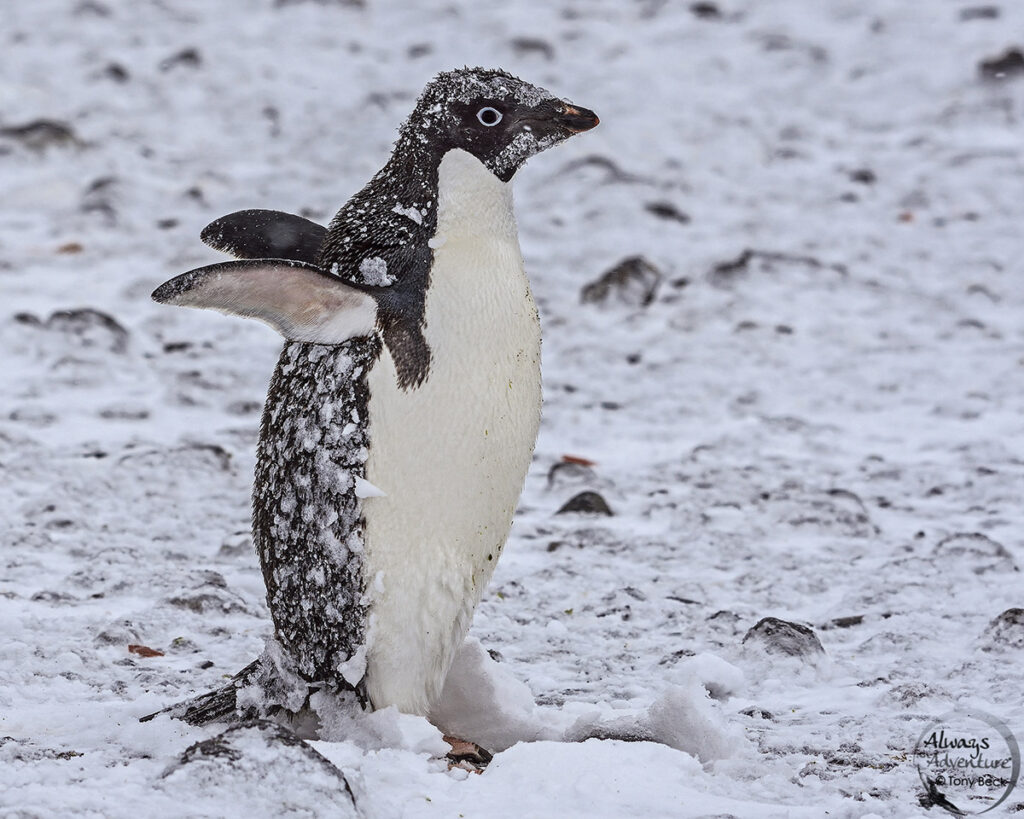
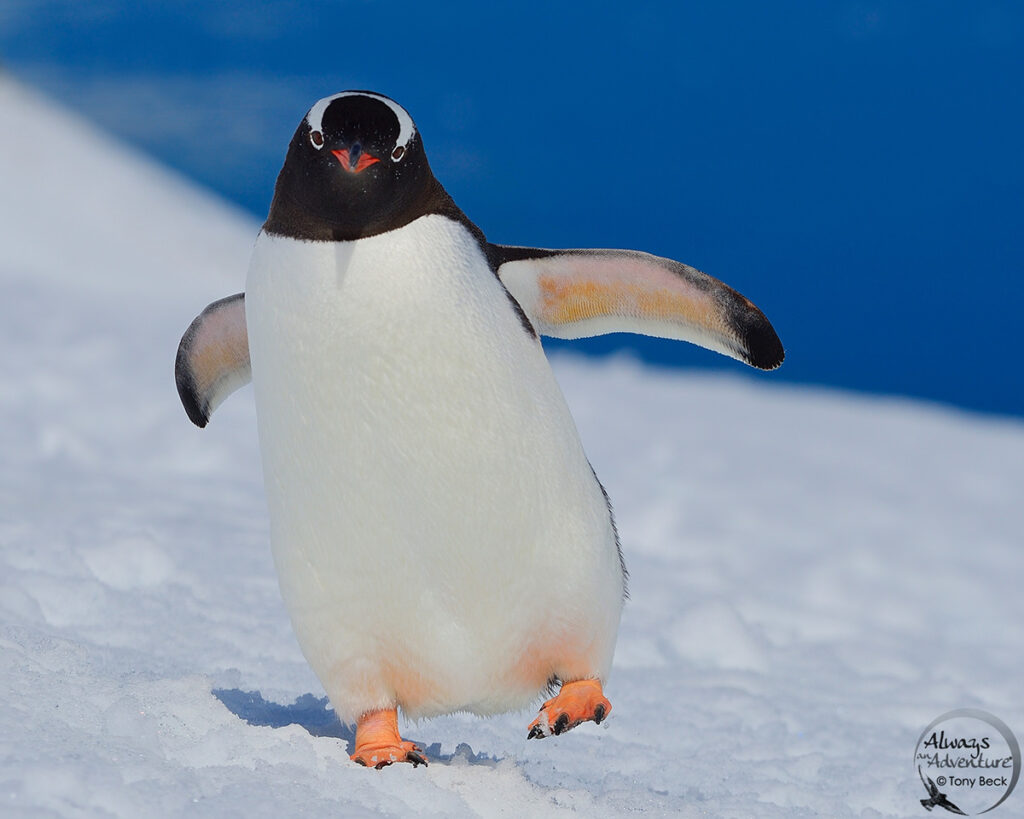
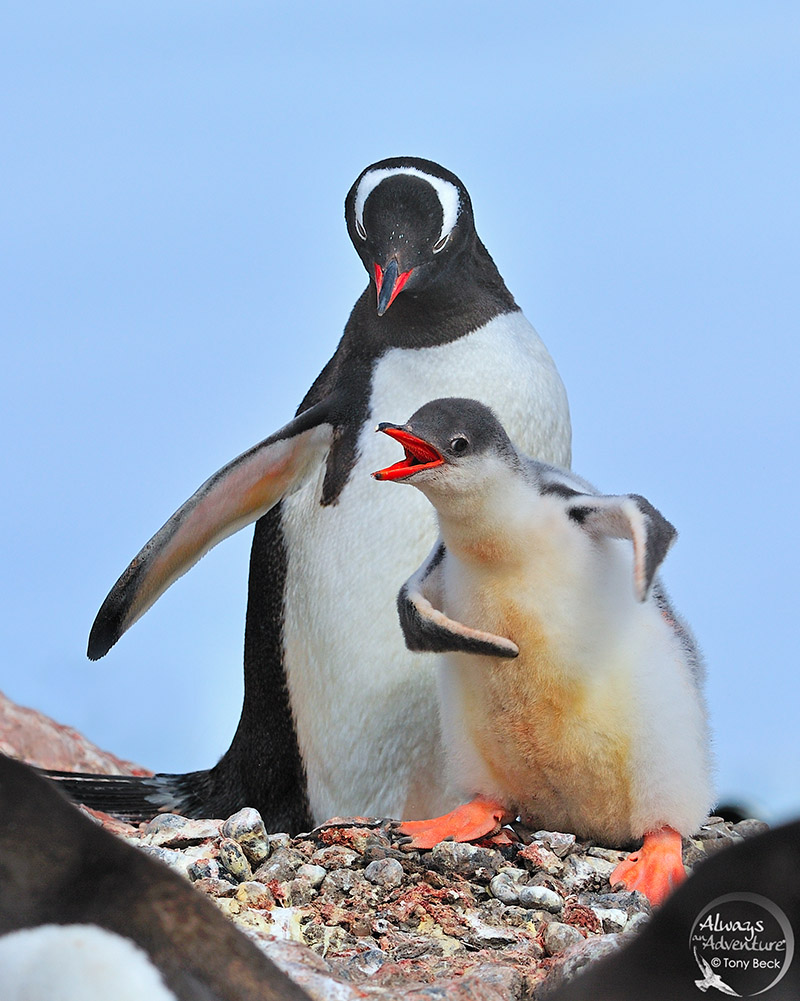
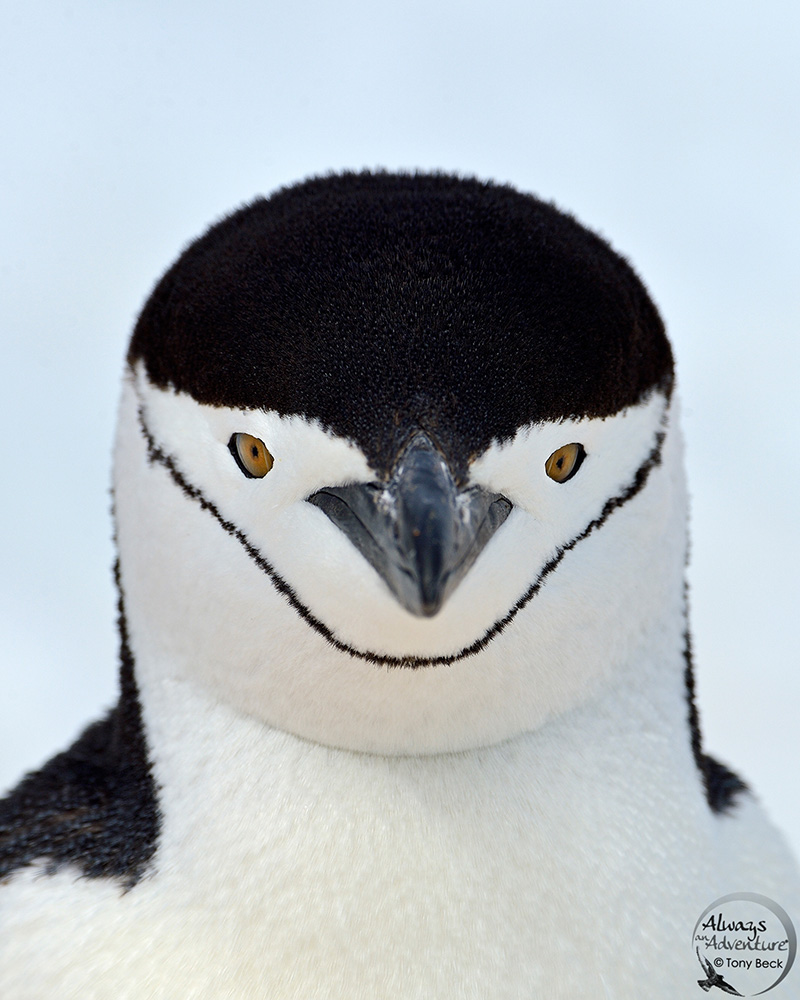
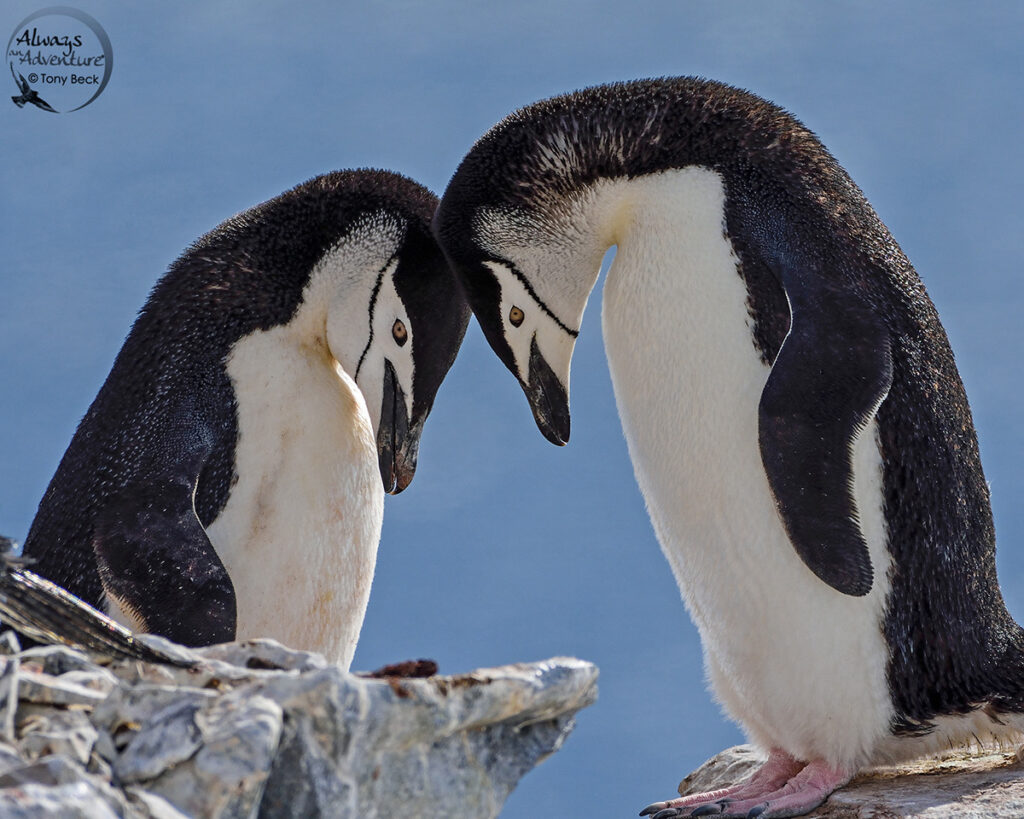
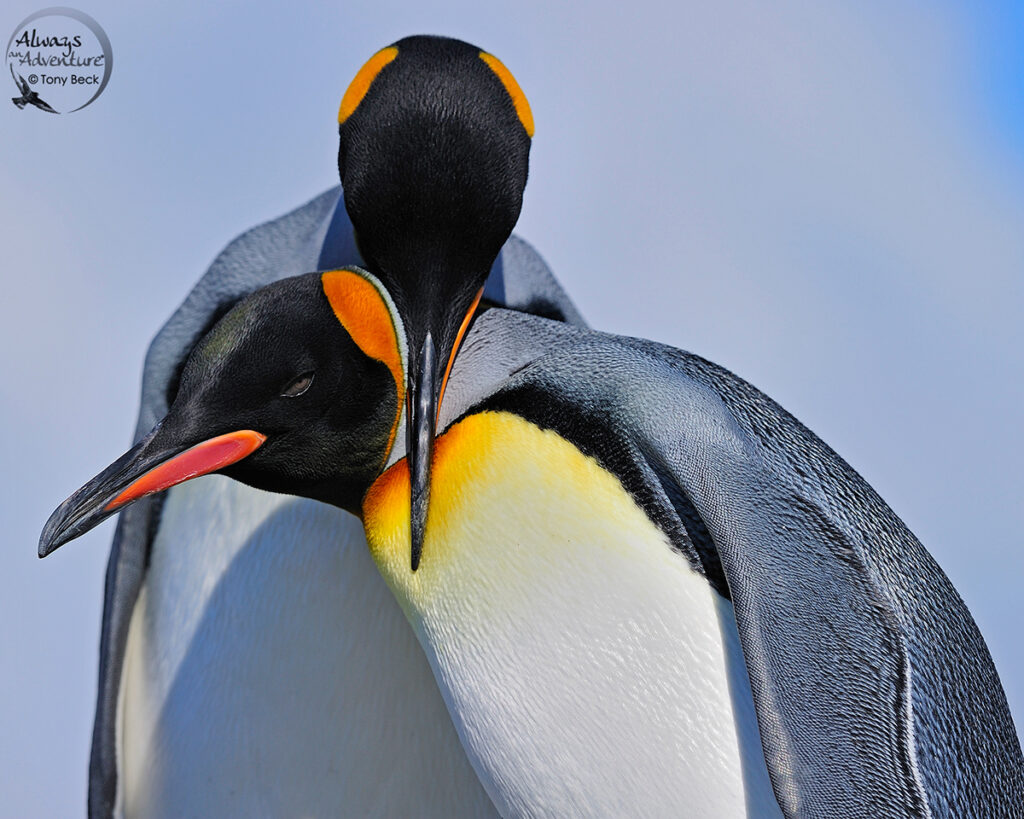
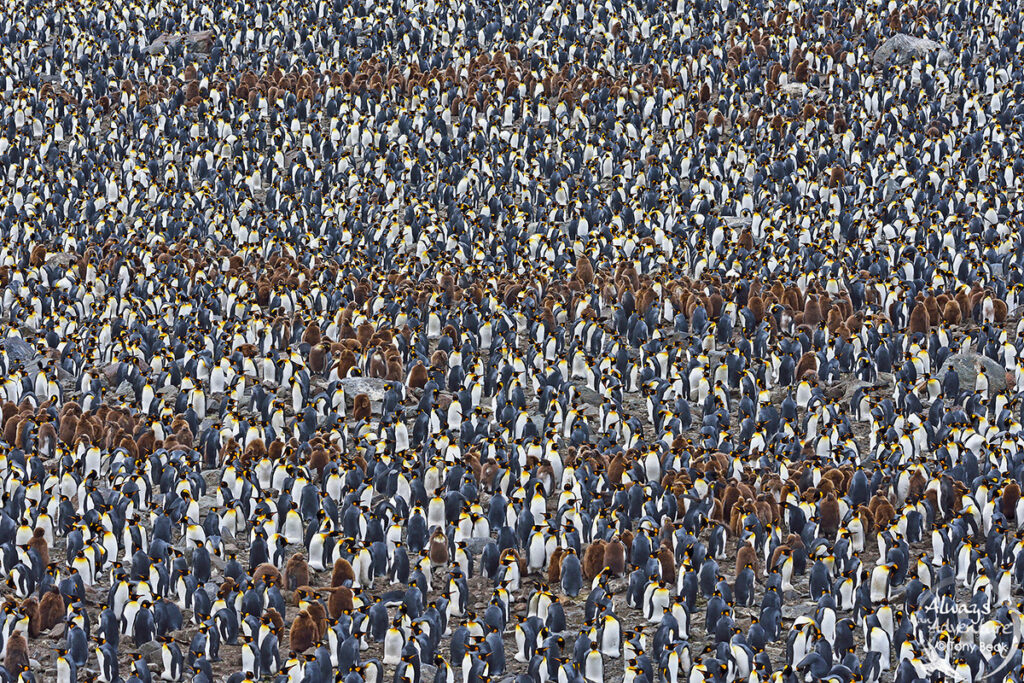
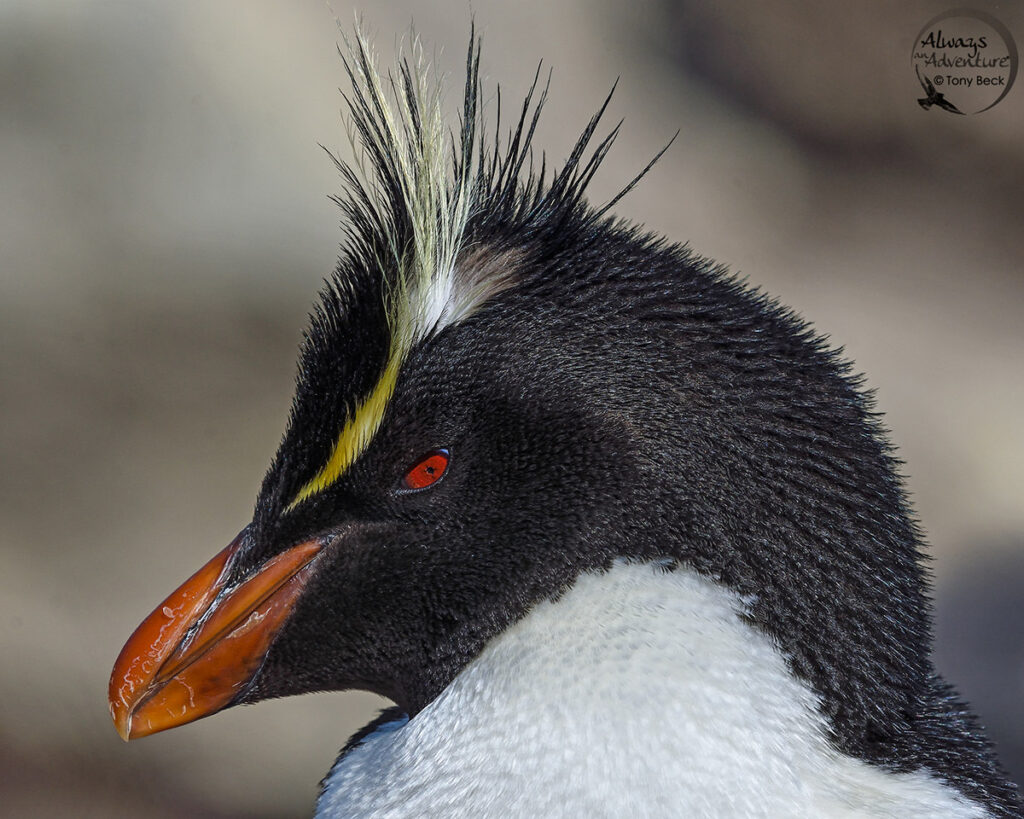
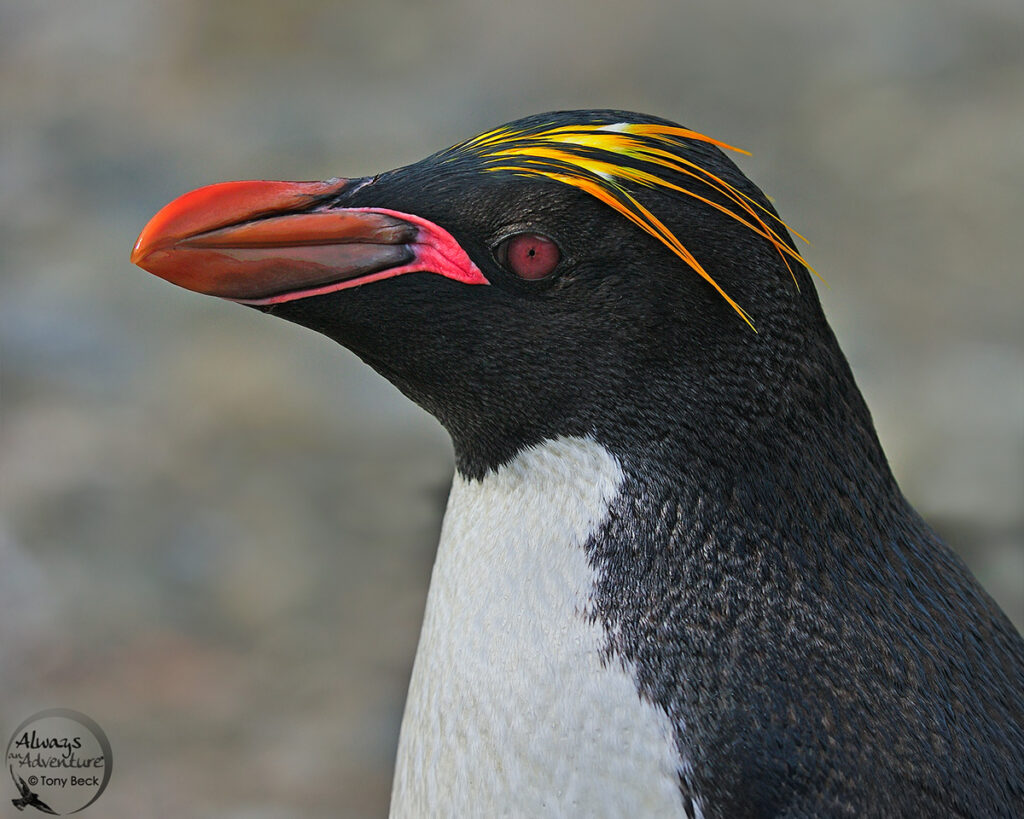
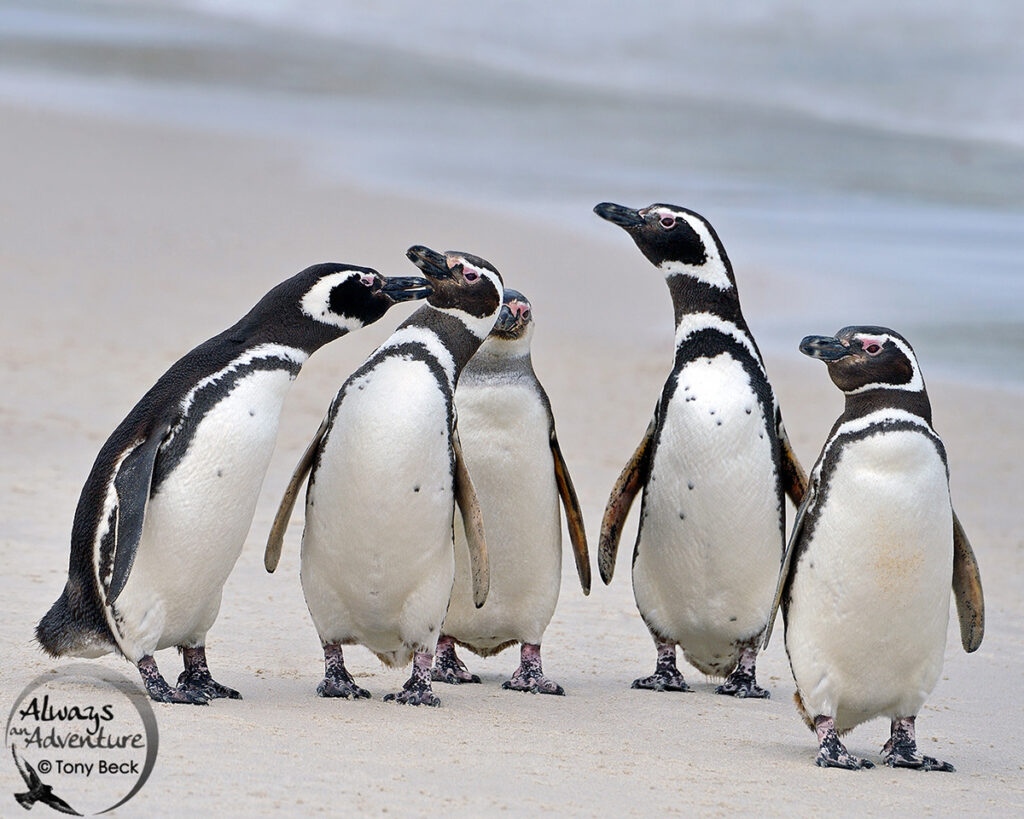
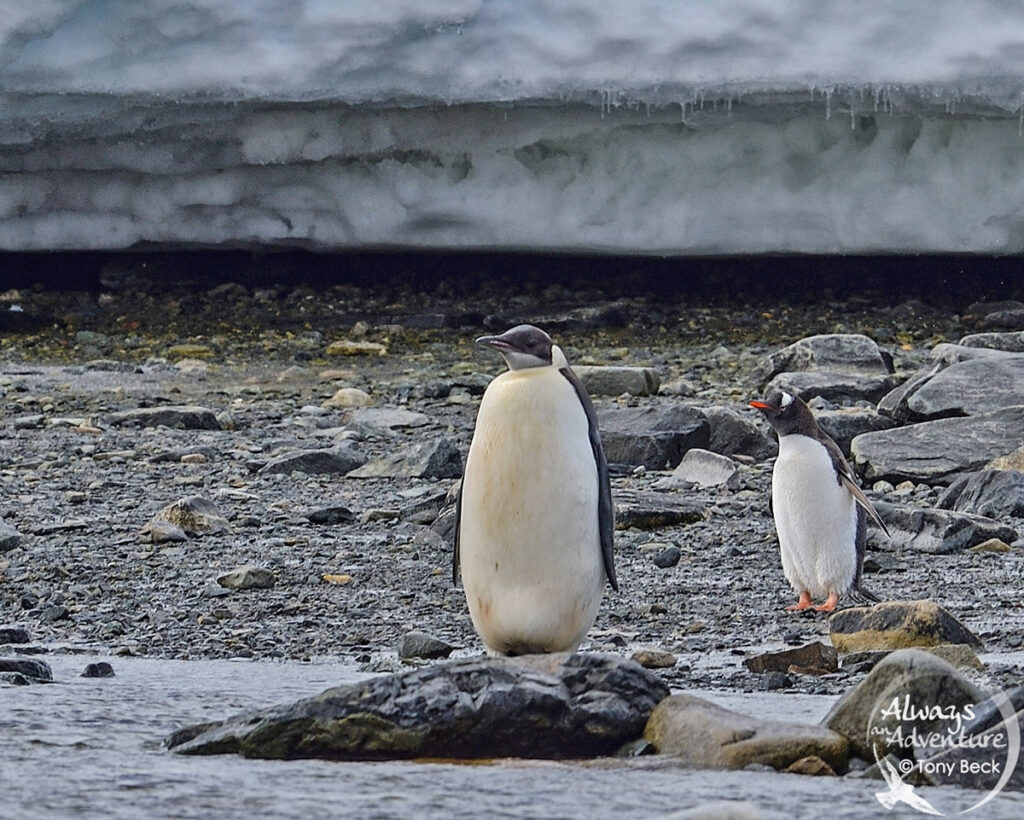






Hey Tony.
I was in Antarctica this past February. HPAI had been found in South Georgia as far back as last September. As a result, they closed 95% of all the zodiac landings sites as of last October. Cruise ships told no one about this, and continued to advertise, and takeibey for Expedition cruises, knowing full well beach landings were all but gone. The beaches still in use were a joke. Quark made a courtesy landing at Brown Bluff as an excuse for a cruise to the Peninsula.
Such a calculated misleading of the paying public expecting something very different.
That is unfortunate Dave.
Tourism is a tough business these days.
I first noticed a significant decline in southern migratory seabirds back in 2022 when shearwaters were almost completely absent in the Bay of Fundy. This is almost certainly the result of HPAI. It’s been present in the North Atlantic since 2021.
Although I haven’t worked on a Cruise Ship since Covid hit, my semi-retirement plans only include travel to Canadian destinations.
Regardless, my advise to anyone visiting Antarctica is to first check if the itinerary includes zodiac landings on any of the colonies. I suspect they will eventually reopen the landings, or renew access in a limited/controlled manner.